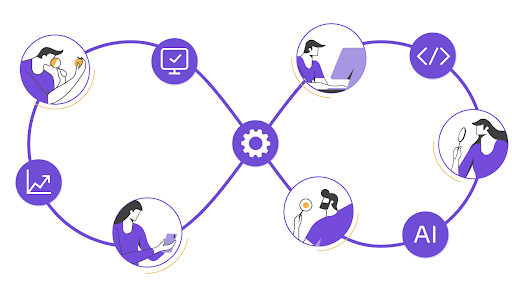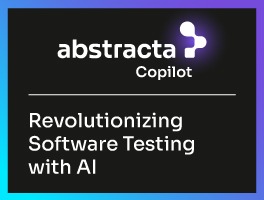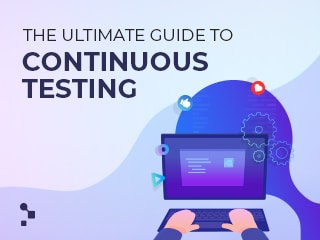Use ROI in software testing to connect five KPIs to money and risk, showing evidence by release, and commit to a 90-day plan that executives can fund.


Software quality is a financial decision. Boards want fewer production incidents, faster recovery, predictable release cycles, and clear trade-offs. QA leaders need a way to translate engineering signals into business language: a compact set of KPIs tied to money and risk, presented by release, and supported by a 90-day outcome plan.
For QA directors who must justify investment, the operating path is straightforward: define five board-ready KPIs (defects in production, flakiness, MTTR, cycle time, and maintenance cost), compare baseline versus current by release, price the effect with a simple CoPQ model, and commit to a 90-day outcome plan. AI can accelerate evidence and, in the right use cases, materially improve outcomes.
Looking to align AI, automation, and testing with clear business impact? Book an executive diagnostic to map KPIs, price CoPQ, and leave with a 90-day plan.
From QA Metrics to Business Impact (Plain Terms)
Think of testing as three levers:
- Prevention: Find issues before users do.
- Containment: When issues slip, recover quickly.
- Throughput: Ship improvements on a steady rhythm.
When prevention works, fewer incidents reach customers. When containment is strong, outages are short and limited in scope. When throughput is healthy, improvements reach the market earlier. Each lever has a clear financial effect: protecting revenue, avoiding rework, and reducing operating waste. The rest of this article explains how to show that effect in a way any executive can read in minutes.
To fully understand the 7 key principles, let’s break them down.
Each principle translates a QA signal into business terms—risk exposure, delivery speed, and operating efficiency—so leaders can decide where to invest next.
The Five KPIs—Explained for Non-QA Readers
1. Defects in Production
What it is: Problems that reach real users—crashes, errors, wrong results.
Why leaders care: Every incident risks revenue, reputation, and regulatory exposure.
How to report: Count incidents by severity and affected users. Add the CoPQ estimate next to the count so the impact is visible.
What moves it: Stronger regression coverage on critical customer journeys; targeted exploratory testing for new or risky features.
2. Flakiness
What it is: Tests that fail for reasons unrelated to actual product defects (timing, environment, brittle scripts).
Why leaders care: Flakiness stalls releases and burns engineering time in re-runs.
How to report: Flakiness rate (% of unstable tests), re-runs, and queue wait time. Convert to engineering hours to show real cost.
What moves it: Stabilize or retire the top offenders; improve data, waits, and environment isolation.
3. MTTR (Mean Time to Recover)
What it is: Hours from incident start to restoration.
Why leaders care: Shorter recovery protects revenue and brand; long tails (P90) are executive risk.
How to report: Median and P90 by incident class. Include a brief customer impact line.
What moves it: Clean rollback paths, clear alerts (few false alarms), incident runbooks, and quick diff-to-root-cause workflows.
4. Cycle Time
What it is: Days from “code complete” to “in production.”
Why leaders care: Shorter cycle time moves value earlier and reduces work-in-progress risk.
How to report: Median/P90 by service or product area. Highlight bottlenecks (queue time, test duration, approvals).
What moves it: Right-sized test suites, parallelization, removing flaky gates, and unblocking handoffs.
5. Maintenance Cost (or Hours)
What it is: Ongoing effort to keep automated tests reliable and relevant.
Why leaders care: If upkeep grows faster than coverage on critical paths, ROI declines.
How to report: Hours per sprint, asset age, coverage of revenue-critical journeys. Trend it.
What moves it: Refactors, de-duplication, pruning low-yield scripts, and investing in a stable automation framework.
What CoPQ Is—and How It Prices the Five KPIs
CoPQ (Cost of Poor Quality) is the financial loss caused by defects and failures, not the budget you spend on testing. In software, CoPQ includes:
- Incidents in production: service unavailability or degraded performance; includes service level agreements (SLA) penalties or credits.
- Rework and hotfixes: engineering hours spent fixing what escaped.
- Degraded experience: latency and errors that reduce conversion or usage.
- Support and operations: on-call, incident communications, and customer care.
- Conservative, optional opportunity loss: delays that push revenue events into later periods.
A simple, auditable model keeps debates short:
CoPQ (quarter) = Σ(incidents × average incident cost) + (rework hours × loaded rate) + (SLA penalties/credits) + (optional, conservative opportunity loss)
CoPQ is the pricing layer for your KPIs: more defects in production increase CoPQ; higher MTTR raises cost per incident; flakiness inflates rework; longer cycle time defers value; excessive maintenance erodes the return on automation.
How to Present This (Board-Ready, One Minute)
- One slide covering the last 3–4 releases
- The five KPIs with consistent definitions and trend arrows
- What changed: One line per intervention in the testing process
- CoPQ this period vs. previous: Use the simple model above
- Next 90-day actions: Owners, dates, and expected impact on release cycles
7 Principles the Board Will Back
1. Start With Five KPIs Everyone Understands
What to show: Defects in production, flakiness, MTTR, cycle time, and maintenance hours/cost—plus test coverage on critical functionalities.
Why it matters: These key metrics map to risk exposure, delivery speed, and operating efficiency; business users can scan them quickly.
How to act: Fix definitions; publish median/P90 for time metrics; keep a short glossary across the software development lifecycle; link outcomes to customer satisfaction and product quality inside your testing strategy.
Shift-left tie-in: Define acceptance criteria and data up front so these KPIs trend the right way before integration.
2. Report by Release: Baseline vs. Current
What to show: The last 3–4 releases on one slide—KPI values, the intervention, and the impact using your CoPQ model; note market demands or seasonality.
Why it matters: Executives decide on trends, not anecdotes; this normalizes measuring ROI and ongoing ROI analysis.
How to act (30 days): Backfill three releases; assign one owner per KPI; align with software development governance; document low/base/high ROI calculations so Finance sees the same story every month.
Shift-right tie-in: Include a single customer-impact line per release so business impact is visible alongside the numbers.
3. Price the Change Using the CoPQ Model
What to show: CoPQ this period vs. prior using Finance’s templates (Incident cost, loaded rates). Include training costs, development costs, initial cost, and initial investment when scope changes; call out cost savings and time savings when trends move.
Why it matters: It connects KPI movement to return on investment without inventing new math; use one worksheet to calculate ROI and keep assumptions stable.
How to act: Focus continuous improvement on the largest CoPQ drivers and report measurable benefits in the same format every quarter.
4. Flakiness: Remove the Invisible Brake
What to show: Flakiness rate, total re-runs, queue wait time, manual testing time, and the engineering hours those re-runs consumed; list failed tests that blocked value.
Why it matters: Flakiness creates manual effort and repetitive tests, delays new features, and wastes QA teams’ capacity.
How to act (60 days): Target the top-10 flaky test suites/test scripts on revenue-critical paths; fix waits/data; isolate environments; show fewer regression testing passes, steadier testing cycle, and reduced testing costs.
Shift-left tie-in: Add contract tests at key service boundaries and stabilize test data to prevent non-determinism before it reaches system tests.
5. MTTR: Contain Impact Fast
What to show: Median and P90 MTTR by incident class with a one-line customer impact note; add defect detection time so earlier signals are visible.
Why it matters: Shorter recovery limits exposure and improves meeting customer expectations.
How to act (60 days): Harden rollback, reduce noisy alerts, publish incident runbooks, and add a “changes since last good state” diff to speed root cause; as MTTR improves, the testing team returns to plan faster, and you measure efficiency more clearly.
Shift-right tie-in: Define service level objectives (SLOs) for critical journeys and use canary releases with fast rollback to limit blast radius during peak traffic.
6. Where Automation Actually Pays
Rule of thumb: Use manual and automated testing together—manual testers lead exploratory testing in ambiguous areas; convert manual test cases into automated test cases once behavior stabilizes.
What to show: Rising coverage on critical journeys; lower re-runs; falling test maintenance; fewer repetitive tasks; and less human error.
How to act: Focus test automation on high-volume, stable flows; expand automation testing only with a clear automation strategy; invest in an automation framework, automation tools, and test automation pipelines where they reduce the maintenance of tests and upkeep; track automation efforts and adopt test automation as budget lines; highlight wins unlike manual testing when repeatability improves.
Delivery model tie-in: Map suites to CI/CD stages—unit/contract at commit, smoke at build, regression before release, synthetic and canary checks in production.
7. Run a 90-Day Outcome Plan With Owners
What to show: Two or three interventions per KPI; one owner per target; checkpoints at days 30/60/90.
Example targets: −30% defects in production, −40% flakiness, −25% MTTR, −15% cycle time, −20% maintenance hours.
How to act: Use testing software metrics to steer quality engineering; keep manual testing focused on risky or ambiguous areas; let automated testing lock in stable value; track test cases as assets, not vanity counts.
Operating rhythm tie-in: Publish the same slide monthly (Releases, KPIs, CoPQ, variance to plan) so progress is visible and decisions are fast.
Where AI Adds Executive Value
Use specialized AI agents to clearly move the KPI trends:
- Change-aware test selection that maps recent code and configuration changes to the tests that matter: Cuts re-runs and increases the return from test automation.
- Early anomaly detection across latency, error rates, and conversion signals: Reduces exposure and enables faster escalation before customers feel the impact.
- Evidence assembly that unifies data from pipelines, incident records, and analytics systems: Keeps reporting light, accurate, and comparable by release.
Governance Essentials
- Human in the loop: Named owners review recommendations and approve actions, and every decision is recorded for audit.
- Accuracy tracked: False positives and false negatives are measured each month with clear thresholds for promotion.
- Clear attribution: Improvements are shown on re-runs, Mean Time to Recover, cycle time, and the Cost of Poor Quality line, so the effect is visible to the board.
Automation Economics (Simple Executive View)
When leadership asks for testing ROI, provide three numbers:
- Effort reduced: Engineer hours and queue time → Positive ROI with clear benefits of test automation
- Exposure reduced: Incident duration/extent and SLA penalties/credits → Steadier operations
- Speed gained: Days pulled forward in the plan → Earlier value recognized
How to Calculate QA ROI: Use a lightweight worksheet with low, base, and high scenarios. Keep the same assumptions every quarter so trends are comparable.
How to Govern QA ROI: Track results quarterly. If upkeep grows faster than coverage on critical paths, pause new automation, rebalance the portfolio, and recalculate using the same worksheet.
Enterprise Use Case (Realistic Scale)
Context: A regional bank engaged Abstracta to address rising incidents after major releases and slow recovery. The organization ran bi-weekly deployments and needed a board-ready view that tied software testing to business impact.
What We Did: We introduced a single, repeatable slide across four releases with the five KPIs and the Cost of Poor Quality. Our work focused on improving root cause analysis (RCA) of production incidents, mapping critical journeys for users, automating impact analysis procedures, stabilizing the ten flakiest areas, right-sizing regression testing, improving alert quality, and hardening the automation framework and test automation pipelines.
We blended manual testing and automated testing: Manual testers handled exploratory testing on risky changes, while test automation covered stable, high-value flows. We increased test coverage on critical journeys, pruned low-yield test suites and test scripts, and tracked maintenance to show test automation ROI instead of script counts.
Results (Two Quarters):
- Defects in production: From 31 to 21.
- Flakiness rate: From 11.8% to 6.4%; test re-runs down 38%.
- Mean Time to Recover: Median from 5.9 hours to 4.0 hours; longest cases from 12.1 hours to 8.3 hours.
- Cycle time: From 5.6 days to 4.7 days.
- Maintenance effort: Down 21% per sprint.
- Estimated Cost of Poor Quality: Reduced by about $310,000 per quarter, validated by Finance.
Outcome: The bank funded the next 90-day plan. Adopting test automation where signals were stable, implementing automation with clear ownership, and measuring ROI with an auditable worksheet created a durable operating rhythm that aligned the software development lifecycle with quality engineering and visible cost savings.
Key Takeaways
- Five KPIs, one CoPQ model, one release-by-release slide—every month; this is ROI in software testing as a repeatable executive view
- Reduce flakiness and MTTR first; they unlock cycle time and stability
- Expand automation where signals are stable; track increased test coverage and upkeep; don’t chase test suites/test scripts counts
- Treat upkeep as part of TCO; budget refactors before expanding coverage
- Use AI where it measurably shifts trends, with guardrails and clear attribution
FAQs about ROI in Software Testing


What Is ROI in Software Testing?
Return on investment in software testing is the net gain from fewer incidents, faster recovery, and steadier delivery compared with total spend on prevention, execution, and upkeep.
How Should Executives Read These KPIs Without a Quality Assurance Background?
To read these KPIs without a Quality Assurance background, treat them as levers for risk, speed, and efficiency. Map defects and recovery to exposure; map cycle time and maintenance to throughput.
Which Costs Should We Include When Computing Automation ROI?
When computing automation return on investment, include initial investment, licenses, training costs, environments, development costs, and test maintenance. Subtract displaced manual testing time and recurring maintenance savings.
How Do We Calculate ROI for Automation With Real Numbers?
To calculate test automation return on investment with real numbers, use incidents avoided, re-runs removed, and time saved. Multiply by finance rates, then present low, base, and high scenarios.
How Do We Model Time to Payback for Test Automation Investments?
To model time to payback, chart monthly outflows and inflows until break-even. Include a ramp for implementing test automation and expected reductions in maintenance and re-runs.
Where Does Manual Testing Fit Alongside Automation?
Manual testing remains essential for ambiguous, high-risk, and human-centered scenarios across the lifecycle. Convert manual test cases to automated test cases for stable regression, keeping human checks for usability, accessibility, and complex integrations.
When Does Automation Return Value?
Automation returns value when flows are high-volume, stable, and verifiable. Prioritize revenue-critical paths; track coverage, re-runs, maintenance, and release speed to confirm automation testing ROI.
What If Not All Tests Are Good Automation Candidates?
Not all tests warrant automation; keep manual testing and exploratory testing for volatile, ambiguous, or human-centered flows and integrations. Automate revenue-critical, stable paths; document an automation strategy with measurable benefits, maintenance, and risk impact.
How Do Architecture and Tooling Affect Outcomes?
Architecture and tooling affect outcomes through a robust automation framework and test automation pipelines. Reliable suites and scripts lower flakiness, reduce the effort of maintaining tests, and improve measuring ROI.
How Can AI Improve Outcomes Without Noise?
Artificial intelligence improves outcomes by change-aware selection, early anomaly detection, and evidence assembly. Govern with owners and thresholds, then show movement in Mean Time to Recover and cycle time. Take a closer look at our case studies.
How We Can Help You


With nearly 2 decades of experience and a global presence, Abstracta is a leading technology solutions company with offices in the United States, Chile, Colombia, and Uruguay. We specialize in software development, AI-driven innovations & copilots, and end-to-end software testing services.
We believe that actively bonding ties propels us further and helps us enhance our clients’ software. That’s why we’ve forged robust partnerships with industry leaders like Microsoft, Datadog, Tricentis, Perforce BlazeMeter, Saucelabs, and PractiTest.
We combine advisory, engineering, and AI-assisted validation to cut incidents, speed recovery, shorten cycles, and lower upkeep. Ready to make this board-ready?
Book an executive diagnostic—KPIs mapped, CoPQ priced, and a 90-day plan for your next steering committee.


Follow us on Linkedin & X to be part of our community!
Recommended for You
The Complete Guide to Software Testing Outsourcing
Abstracta’s New Open-Source Product for Connecting AI Agents with AS400/iSeries Systems
Tags In


Sofía Palamarchuk, Co-CEO at Abstracta
Related Posts
Software testing services, the key to increasing customer satisfaction
Why should software testing services be a priority for today’s marketers and CX professionals? Software testing is an essential link for the creation and development of quality software, with platforms capable of delivering better digital experiences. Software quality and the focus on customer experience are…
Abstracta Opens Doors in Santiago, Chile, Launching First Franchise
(Spanish version below) SAN FRANCISCO, CA – June 27, 2019 – To meet the rising demand in global outsourced software testing services, Abstracta Inc. has opened its third Latin American office in Santiago, Chile. The newest expansion marks the inauguration of Abstracta’s first franchise, in…
Search
Contents
Categories
- Acceptance testing
- Accessibility Testing
- AI
- API Testing
- Development
- DevOps
- Fintech
- Functional Software Testing
- Healthtech
- Mobile Testing
- Observability Testing
- Partners
- Performance Testing
- Press
- Quallity Engineering
- Security Testing
- Software Quality
- Software Testing
- Test Automation
- Testing Strategy
- Testing Tools
- Work Culture





